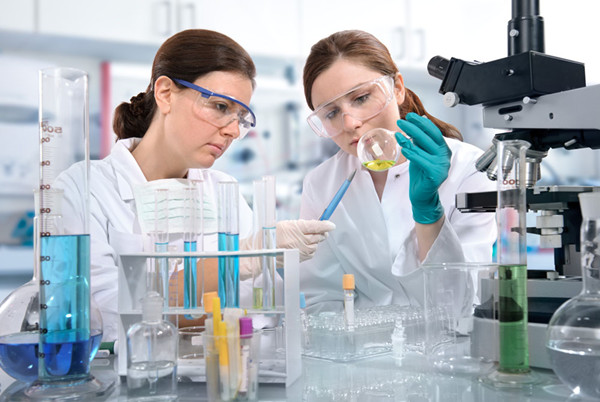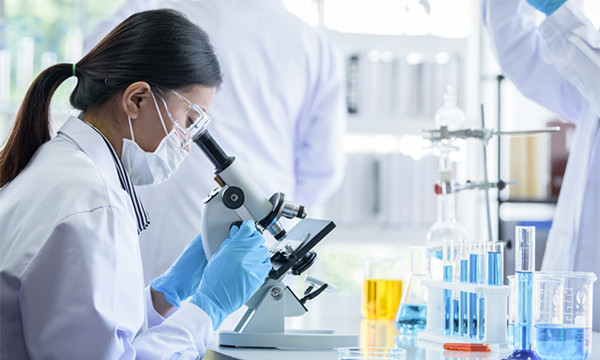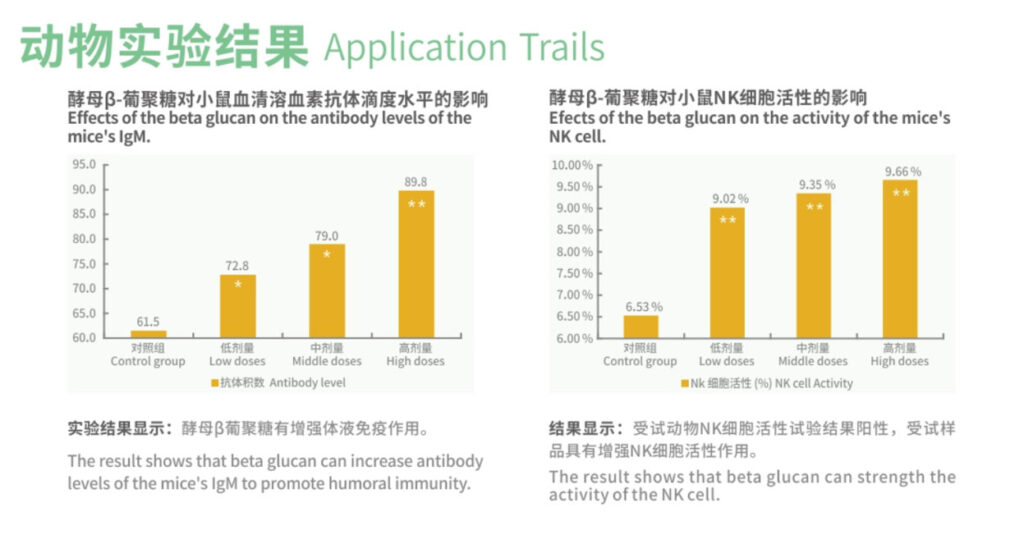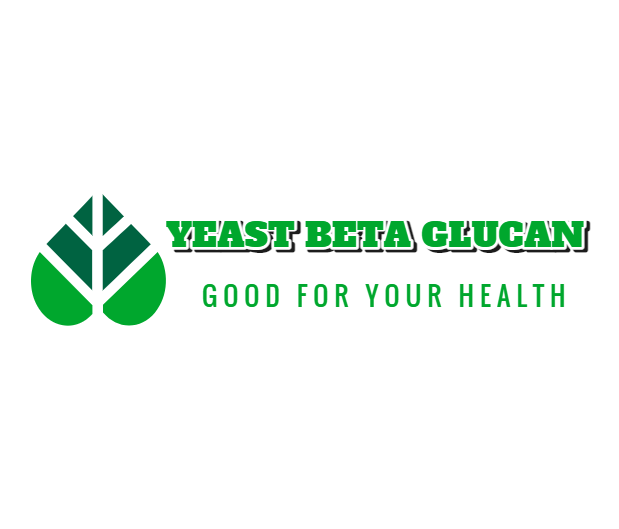β-glucan, homopolymers of glucose, are found abundantly in various microorganisms, mushrooms, and plants. These β-glucan are of the high value of attention because of their bioactivity and medicinal benefits. Multiple studies show that β-glucan have the potential to enhance the immune system. However, the β-glucan from different sources have different modulating effects. It depends upon the primary chemical structure of β-glucan. One crucial source of β-glucan is yeast, especially baker’s yeast (Saccharomyces cerevisiae). The yeast-derived β-glucan, (1,3)-β-linked with small chains of (1,6)-β-linked side chains, are known for their immune-modulating effect (Chan et al., 2009).
The extraction of yeast β-glucan is an essential step for its use as a supplement to boost the immune system. The extraction method plays a vital role in determining the structure, quality, and function of β-glucan. Several isolation processes of isolation of β-glucan exist, including base, acid or combination of acid-base method, enzymatic and oxidative extraction, etc. (Borchani et al., 2014). Some of the important methods use for β-glucan extraction from yeast are briefly discussed here.
Yeast β-glucan extraction process
Levedura β-glucana is mainly alkali-insoluble glucan, which is an active polysaccharide. The key to its preparation is to remove impurities such as protein, mannan, and lipids. The methods for preparing yeast glucan in China and abroad mainly include the acid-base method, enzymatic method, and oxidative extraction.
Acid-base method

In autolysis, cell endo-structure degrades and releases vascular proteases into the cytoplasm. The base (NaOH) helps remove impurities, while the acetic acid is a mild acid that limits the hydrolysis of (1,3)-β-glucan.
The dry active yeast cell propagated and mixed with five times 1 M NaOH. The samples were then heated in the water bath to lyse the yeast cell to release the glucan. NaOH lysed the yeast cell and helped in the release of β-glucan. The end product of the pellet is air-dried to obtain pure β-glucan and stored for future use.
Advantages and disadvantages of this method
The use of a strong base (NaOH) and weak acid (CH3COOH) give a high quality and high quantity beta-glucan. The glucan extraction through this method is easy, fast, economical, and has promising results. The acid-base method has certain advantages; it yields small size, uniform, non-agglomeration, and high yield of β-glucan. Furthermore, it gives the triple-helical structure of β-1,3/1,6-linked glucans with high thermal stability. The acid-base method is efficient regarding the outcome. Although this method provides high-purity glucan products, it needs to consume many acids and alkali, causing severe environmental pollution, causing specific damage to glucan molecules (Mahmoud Amer et al., 2021).
Enzymatic method
The working principle of the enzymatic method is based on yeast cell lysis is by using cell autolysis and hot water. Subsequently, lyticase enzyme is used for the removal of cell wall proteins. Protease enzyme is also used to remove cell wall proteins and organic solvents for lipid removal (Varelas et al., 2016).

Yeast cells are harvested and disrupted in a high-pressure homogenizer. Subsequently, treating with hot water a gentle sonication is greatly helpful in breaking yeast cells, following that β-glucan extracted from yeast cells by combination of hot water and enzymatic treatment. Enzyme treatment of the yeast cell wall can remove a large amount of protein, thereby reducing the subsequent alkali concentration and usage (Jaehrig et al., 2008). Addition of lyticase enzyme help in the removal of cell wall protein. Protease enzyme is also helpful in the removal of cell wall protein and organic solvents. The enzymatic method of beta-glucan extraction gave a better yield and higher content than did traditional isolation methods.
Advantages and disadvantages of this method
This method is more sophisticated, and the resulting yeast β-glucan product has a complete molecular structure. Therefore, the enzyme method is more suitable for large-scale yeast β-glucan extraction and purification (Borchani et al., 2014). The disadvantage of this method is the instability and high cost of the enzyme.
Miscellaneous methods
In addition to the traditional acid-base method and enzymatic method, some researchers also use other methods to prepare yeast glucan with higher purity. 0.5%~2% sodium hypochlorite solution to directly treat the yeast cell wall for more than 5 hours at room temperature, and the yield of the high-purity yeast glucan product obtained was more than 20%. Although this method can obtain β-glucano de levedura with higher purity, the influence of strong oxidants on the molecular structure of glucan remains to be studied in depth (Ohno et al., 1999).
Hiyeast uses the acid-base method, and their product has been proven by research.
Hiyeast uses the Acid-base method for extraction and preparation of Beta-Glucan from yeast. They did various research trials for the determination of quality and effects on animals. Hiyeast’s check its product by a variety of research on the animal. They did the clinical trials on mice and tested them in the following items.
NK cell activity test on mice

The result shows that their yeast beta-glucan product can strengthen the NK cells of the tested animal to increase immunity significantly. This study confirms that the use of beta-glucan substantially enhances immunity. Hence, many people will pay attention to use β-glucan in their foods to improve their immune system in the future.
They made a one-month yeast β-glucan trial on mice. The mice were fed for 30 consecutive days, and the results showed that the sample was non-toxic, non-mutagenic, or mutagenic. A high dose of yeast β-glucan significantly enhances the antibody level of mice, and thus it promotes humoral immunity, and no toxic or mutagenic effect was observed.
These studies show that their β-glucan products are according to international standards and prepared using highly efficient methods. Their methods are well-known and reliable, which provide high-quality non-toxic, non-mutagenic products that will significantly enhance the immune system. The company is committed to delivering high-standard β-glucan products to help people in boosting their immune systems.

 English
English Nederlands
Nederlands Français
Français Deutsch
Deutsch Italiano
Italiano 日本語
日本語 Português
Português Русский
Русский Español
Español Türkçe
Türkçe Tiếng Việt
Tiếng Việt



27 Respostas
Hi,
We are looking for water soluble yeast beta glucan for developing of functional and nutraschutial
food supplements.
looking forward to hearing your good news.
shon kwi bae
Hi,
We are looking for water soluble yeast beta glucan for developing of functional and nutraschutial
food supplements.
looking forward to hearing your good news.
shon kwi bae
Yeast beta glucan is the insoluble part of the cell wall and its structure determines its insolubility.
Itís difficult to find knowledgeable people in this particular subject, however, you seem like you know what youíre talking about! Thanks
It’s actually a cool and helpful piece of info. I am satisfied that you simply shared this useful information with us. Please stay us up to date like this. Thanks for sharing.
I really appreciate this post. I?¦ve been looking everywhere for this! Thank goodness I found it on Bing. You’ve made my day! Thanks again
I like this web site its a master peace ! Glad I noticed this on google .
Precisely what I was searching for, regards for posting.
It’s hard to find knowledgeable people on this topic, but you sound like you know what you’re talking about! Thanks
Respect to website author, some good entropy.
I liked up to you’ll obtain carried out right here. The comic strip is tasteful, your authored subject matter stylish. however, you command get bought an edginess over that you would like be delivering the following. sick without a doubt come more beforehand again since precisely the similar just about a lot often inside case you defend this hike.
I have been browsing online more than 3 hours today, yet I never found any fascinating article like yours. It?¦s pretty price sufficient for me. In my view, if all web owners and bloggers made just right content as you probably did, the internet can be a lot more helpful than ever before.
Pretty nice post. I just stumbled upon your weblog and wanted to say that I have really enjoyed browsing your blog posts. In any case I’ll be subscribing to your rss feed and I hope you write again very soon!
I like this website very much, Its a real nice billet to read and receive info . “Famous remarks are very seldom quoted correctly.” by Simeon Strunsky.
Excellent site. Plenty of helpful information here. I¦m sending it to some buddies ans additionally sharing in delicious. And obviously, thank you on your sweat!
Whoa! This blog looks just like my old one! It’s on a entirely different topic but it has pretty much the same layout and design. Excellent choice of colors!
Heya i’m for the first time here. I came across this board and I in finding It truly helpful & it helped me out much. I’m hoping to give something again and help others like you helped me.
Precisely what I was searching for, thankyou for putting up.
Thanks so much for the post.Much thanks again. Fantastic.
Hello, you used to write excellent, but the last several posts have been kinda boring?K I miss your super writings. Past few posts are just a little bit out of track! come on!
Its superb as your other posts : D, appreciate it for putting up. “Talent does what it can genius does what it must.” by Edward George Bulwer-Lytton.
I like looking through and I conceive this website got some truly utilitarian stuff on it! .
It is truly a great and useful piece of information. I am satisfied that you simply shared this helpful information with us. Please keep us up to date like this. Thank you for sharing.
Valuable information. Fortunate me I found your site unintentionally, and I’m stunned why this accident did not happened earlier! I bookmarked it.
It¦s actually a nice and useful piece of information. I¦m satisfied that you simply shared this helpful information with us. Please stay us informed like this. Thanks for sharing.